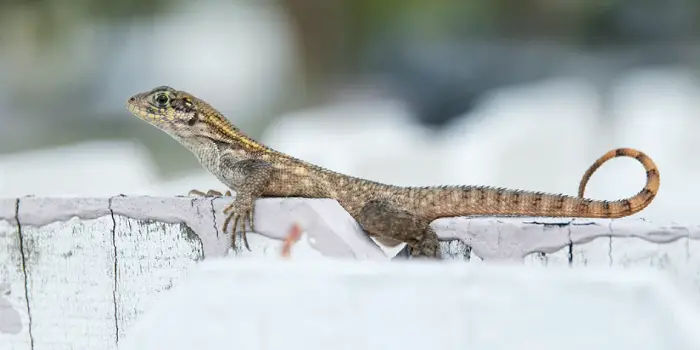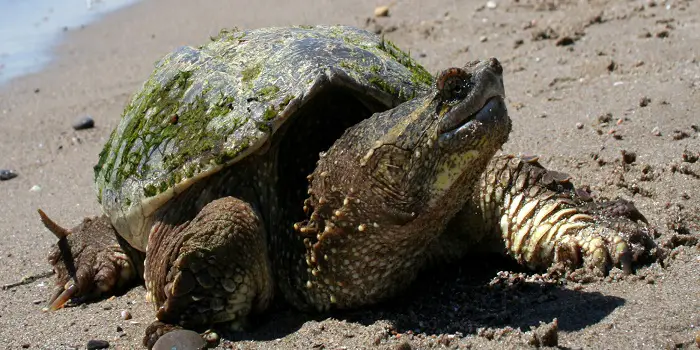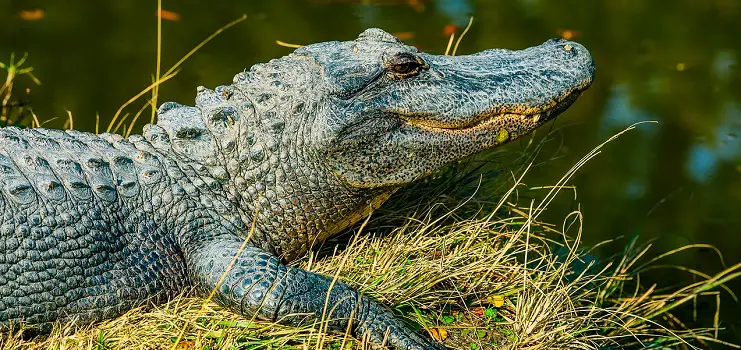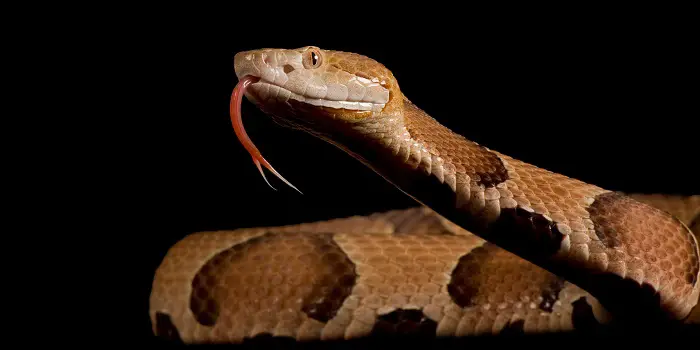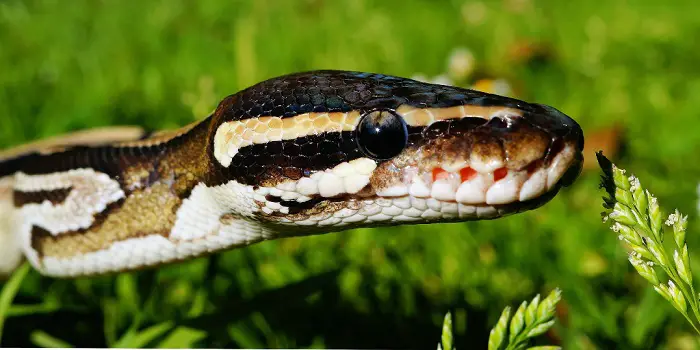
Gardening can be your favorite hobby. And you may not like it to be disturbed by the existence of snakes.
Snakes are, in fact, on the top list for many when it comes to garden pest control. Even a mere sighting of it causes fear, whether it is alive or dead.
If you see snakes frequently in your backyard garden, you must be in a dilemma about how to handle this problem.
Worry not, the idea is very simple, and I am sure you will love implementing it. Simply grow the plants that repel the snakes.
But before I get to the list of these snake repelling plants, let us know why these snakes choose your place for a perfect hideout…
This is usually due to the cold climate, wet soil, and shade from plants and trees, along with their favorite prey (like small birds, squirrels, rodents, insects, etc.) that are present in your garden.
So, make sure you also deal with them for the long-term solution.
12 Plants That Repel Snakes Naturally
Snakes hate certain plants and flowers to the core.
If these plants are present in your area, they would not like to enter your garden. Or if it does, it will shift away quickly.
Some of these plants include…
1- Marigolds
If you ask gardeners the solution for your snake trouble, they will straight away tell you to grow Marigolds.
It is popular and available widespread. It dons your garden with striking yellow/white color flowers.
Not only that, but it also emanates a strong odor that irks the snakes.
Complete sun-light and wet soil with proper water draining facility help them grow well with deep roots.
Snakes can’t withstand the staunch smell and flee away.
2- Andrographis Paniculata
Andrographis Paniculata (Creat or Green Chireta) makes an easy case under the snake repellent category.
Being found predominantly in Sri Lanka and India, the pungent smell and acidic taste of the roots and leaves cause allergies to the snakes.
Many have seen that the scales of the snakes swell up when rubbed with these plant leaves.
With this practical example, you can be sure that snakes will think twice before climbing up this plant.
This Andrographis Paniculata can also be used to treat your respiratory disorders.
3- Indian Snakeroot
Indian Snakeroot / Devil pepper / Rauvolfia Serpentima is home to many Asian sub-continents like India.
The main chemical substance “Reserpine” present in this Sarpagandha plant causes dizziness and reduces the heartbeat rate of snakes.
Snakes are also allergic to the scent of these plants, and hence they won’t come near them.
Some people rub this leaf on the snake-bitten wound or eat it orally, believing that this will nullify the effect of the venom.
4- Mugworts
Do you know that the Chinese/Japanese made use of the insecticidal properties of the oils from this Mugwort or Wormwood or Chrysanthemum as a traditional medicine?
You can be sure that snakes are frightened of this plant, but no one knows what drives the snakes away from this plant.
Who cares when you get the ultimate result of being a good snake repellent, and this plant does that work finely?
This plant spreads and grows up to a height of 3 meters quickly, covering large areas soon, so it requires more maintenance efforts from your side.
5- Pink Agapanthus
If you live in a hot climate area, then this Pink Agapanthus plant can be a perfect deal as it requires less water to grow. It is also known as Tulbaghia violacea.
Like the marigolds, these pink color flowers too will light up your garden.
Don’t hesitate to consume the leaves orally in case you have sinusitis or headache problems, as it can cure them.
The odor released from the roots and foliage causes a headache for the snakes and you.
So go ahead and plant this without any hesitation to keep the snakes, fleas, mosquitoes, and any other insects at bay.
6- Mother-In-Law’s Tongue
Since time immemorial, we have had this funny habit of relating many things to our mother-in-law on a funny note.
Likewise, we have named this plant Mother-in-Law’s Tongue.
Vipers Bowstring Hemp is colloquially called a Snake plant because if you look at it from a distance, it will look like a snake’s head waving through the wind.
Who knows, it may seem like another giant snake in a snake’s point of view, and they don’t want to mess with it?
The edges of the leaves are sharp, too, and can be planted both indoors/outdoors.
Besides scaring the snakes naturally, this plant enables good air circulation as more oxygen gets released compared to other plants.
7- Lemongrass
Last but not least, Lemongrass is the ideal plant for you to grow that repels snakes.
The citrus taste and odor of the plant keep the snake away from your garden without any hassles.
A good effective way to use the plant for snake control is by forming a barrier around the perimeter of your property.
Even though it is of less maintenance, you need to water it frequently during summer to prevent it from drying out.
8- Kaffir-Lime
Kaffir-Lime (makrut lime or Citrus hystrix) is generally known for its usage in Asian dishes.
Snakes find the smell of these plants repulsive and will often walk away from the places where these plants are grown.
This plant needs moist soil and sufficient sunlight. Also, you will need to water them regularly.
9- Society Garlic
Tulbaghia violacea or Society Garlic can survive the scorching heat of summer and droughts.
So, if you are in a hot arid region and are concerned about snakes, you can grow this plant to keep them away.
By growing Tulbaghia violacea in your home, the potent smell of the plant also helps in keeping away fleas, and mosquitoes.
10. Cactus
Snakes turn themselves off if they find thorns and spikes nearby.
Cactus is, therefore, a plant you can grow in your home and garden to keep them away.
Cactus can also survive well in dry and warm climatic conditions, so you need not worry about watering them more often.
11- Jimsonweed
Jimsonweed (Datura stramonium, thorn apple, or devil’s snare) is a plant species that belongs to the nightshade family.
Since it contains tropane alkaloids along with hallucinogenic effects, these plants produce a foul and bitter odor that keeps snakes from entering your home or backyard garden.
The plant usually needs well-drained moist and fertile soil along with full sunlight to survive.
12- Onion & Garlic
Onion & Garlic comes with medicinal properties and is widely used for food and natural cures.
Additionally, cloves of garlic and onions act as a strong snake repellent that helps keep the slithering serpents away.
You can grow these plants along with other plants in your garden, particularly at a place where you may have witnessed snake presence in the past.
Considerations and Tips
Above mentioned plants can be used for decorative purposes and pest control.
Although many small snakes and serpents find these plants highly repulsive, they may come with certain side effects (like skin irritation) that shouldn’t be ruled out completely.
If you happen to observe any such adverse reactions or symptoms while using these powerful snakes repelling plants and flowers, stop using them and seek immediate medical advice.
In short, you need to consider the invasive nature of these plants as well before you have grown them in your garden or indoors to keep the snakes off naturally.
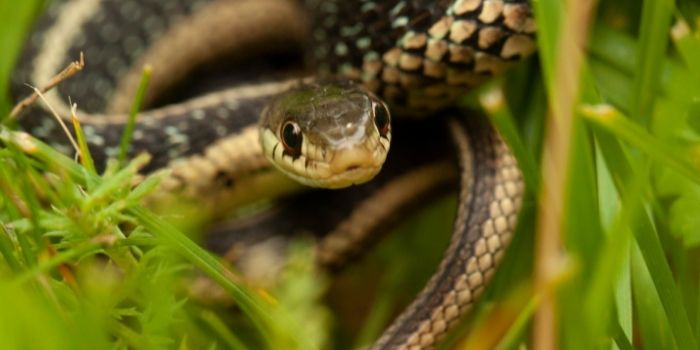
Garden Plants and Flowers that Can Attract the Snakes
Ground cover plants, low vines, and flower bed plants (like thick jasmine growth, morning glory, rosemary, etc.) provide a good shelter for rodents.
These are the plants that invite the snakes most to your garden.
Creepers like myrtle and other low flowering plants also tend to be welcoming to snakes in the garden.
Plus, the beds of clover that are present underneath your bird feeder can also become a favorite habitat for snakes since it gives them a cool place to rest comfortably.
In addition to all the above, venomous snakes also like to habitat on woodpiles and flowerbeds with heavy mulch as it serves them good protection from predators.
With that said, it’s not the plants and herbs that attract the snakes to your garden.
It’s the shelter and shade, along with the food (like rodents), that appeals to the snakes.
Similarly, if you have bird feeders in your garden, it can attract critters like squirrels, chipmunks, and mice.
So, you will need to keep a check on these to avoid the snakes attracting your plants and garden.
The Conclusion
We, as humans, generally have a phobia towards many animals and insects ranging from spiders, lizards, etc.
Many people used to play pranks using fake snake-like figures. It’s true that an encounter with it can be life-threatening.
The above list of snake repelling plants is not exhaustive.
And I am quite confident that you might know a few other names to your knowledge that snakes find unwelcoming and unsafe to be around.
Feel free to share those as it would help all in keeping the snakes at bay and say bye-bye to hiss-hiss!!
Share the post "12 Plants That Repel Snakes – And Few That Attracts Them Most"

Welcome to ProShieldPest.com. I am Tina Jones. I have been working as a pest removal professional in Winslow, Arizona lately. At present, I love to spend my time with my family as a retiree.
Here I share all my knowledge and experiences to help people understand better how they can stop pests at their homes without actually killing them. Hopefully, the information you will find here will help in safeguarding your home! You can check more about me here.

